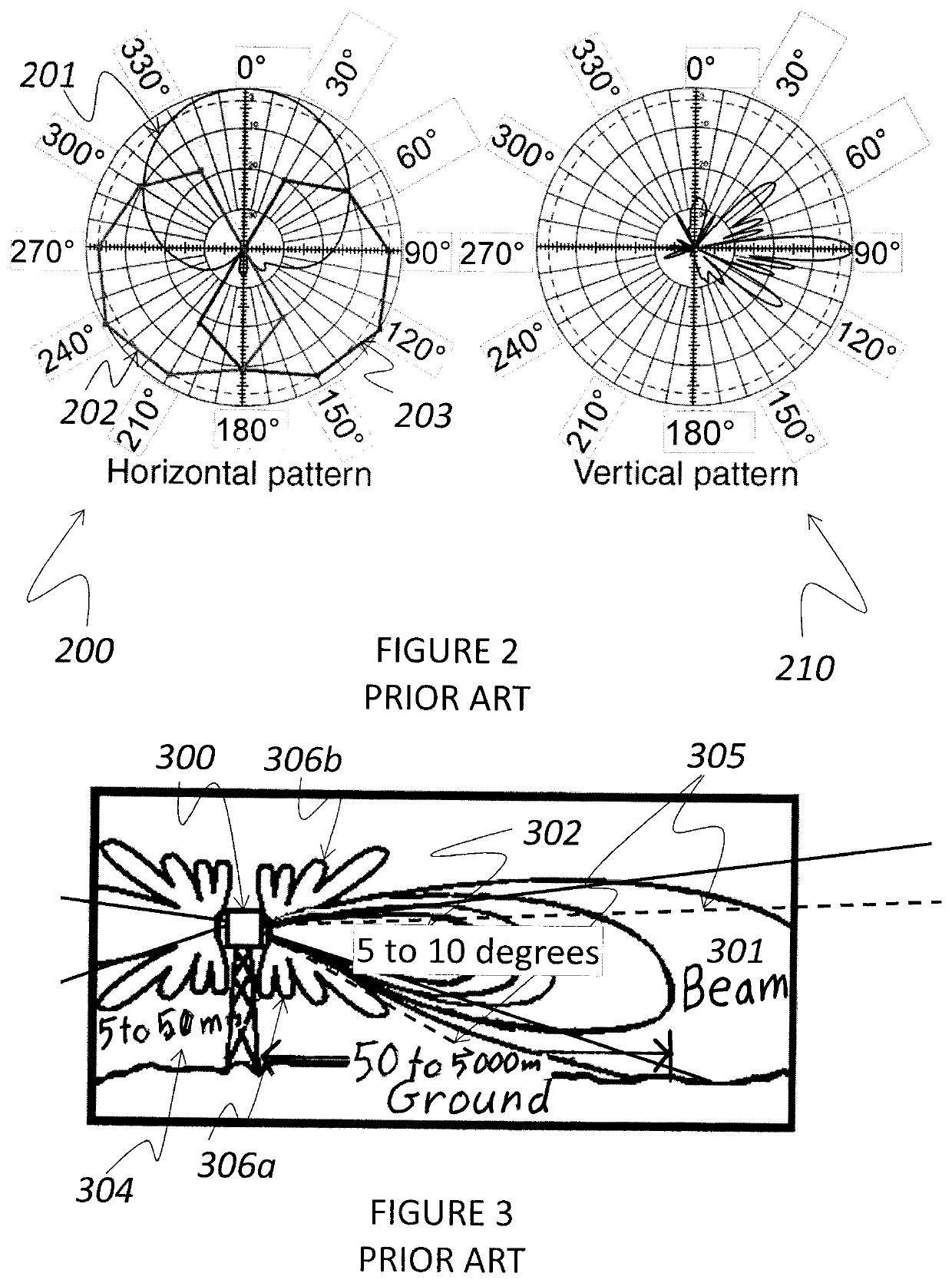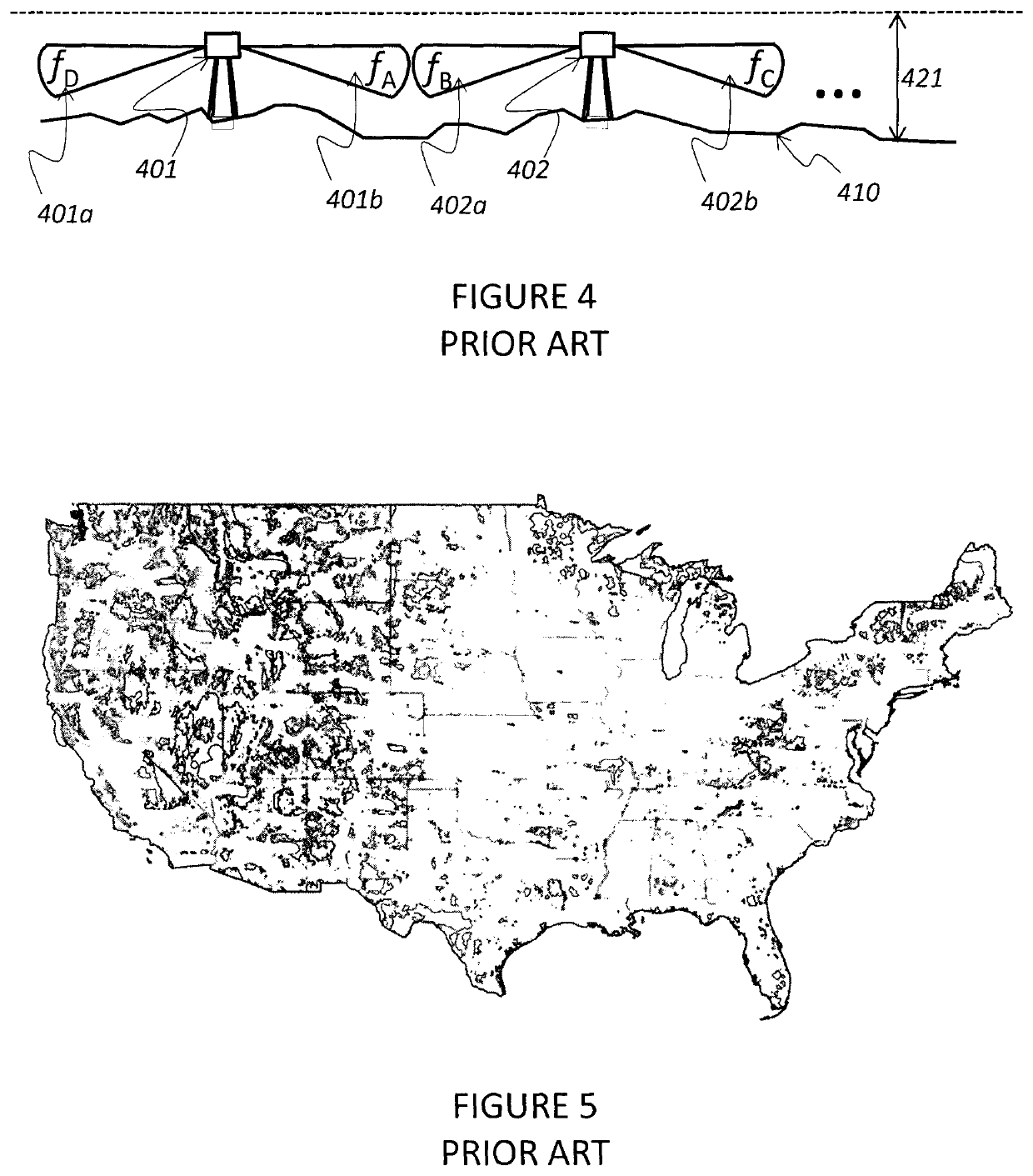System for employing cellular telephone networks to operate, control and communicate with unmannded aerial vehicles and remote piloted vehicles
a technology of cellular telephone networks and aerial vehicles, applied in the field of wireless communication, can solve the problems of insufficient in number and available operating bandwidth, inability to control and communicate with unmannded aerial vehicles and remote piloted vehicles, and inability to have the room or payload capability of the antenna system necessary for the rpv
- Summary
- Abstract
- Description
- Claims
- Application Information
AI Technical Summary
Benefits of technology
Problems solved by technology
Method used
Image
Examples
Embodiment Construction
[0033]This invention pertains to the use of some parts of the existing installed base of cellular networks presently serving most of the world's population along the ground, as the backbone of a system for servicing the communications and datagram exchange needs of emerging commercial UAV and RPV activities in the air.
[0034]In a preferred embodiment, referring to FIG. 10, new antennas are mounted on one or more existing cellular network towers (1001, 1002) however pointing skyward instead of along-ground, and with either horizontal or right- or left-circularly polarized radiation patterns, and which nominally radiate upwards in a cone shape subtending some angle (1050), though any other shape is possible. The shape of the upward radiation pattern may be electronically steered or controlled. It may also be isolated further from ground radiation patterns by passive shield or screens (1060), further minimizing the effect of side-lobes from the ground-oriented radiation patterns on aeri...
PUM
 Login to View More
Login to View More Abstract
Description
Claims
Application Information
 Login to View More
Login to View More - Generate Ideas
- Intellectual Property
- Life Sciences
- Materials
- Tech Scout
- Unparalleled Data Quality
- Higher Quality Content
- 60% Fewer Hallucinations
Browse by: Latest US Patents, China's latest patents, Technical Efficacy Thesaurus, Application Domain, Technology Topic, Popular Technical Reports.
© 2025 PatSnap. All rights reserved.Legal|Privacy policy|Modern Slavery Act Transparency Statement|Sitemap|About US| Contact US: help@patsnap.com



